
Kozje is a small town and a municipality in eastern Slovenia. The settlement of Kozje lies in the centre of the municipality, 36 km (22.37 mi) from Celje, 107 km (66.49 mi) from Ljubljana, and 30 km (18.64 mi) from Rogaška Slatina. It is the main settlement of the Kozje region. The area was part of the traditional region of Styria. The municipality is now included in the Savinja Statistical Region. It is one of the oldest settlements in the area, first mentioned in written documents dating to 1016. It was granted market rights before 1384.

Ribnica na Pohorju is a settlement and a municipality in northern Slovenia. It lies in the Pohorje Hills west of Maribor. The area was part of the traditional region of Styria. It is now included in the Carinthia Statistical Region.
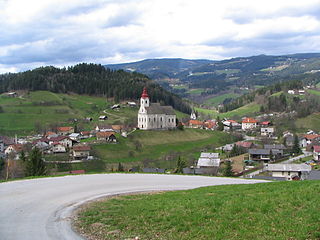
Vitanje is a small town and a municipality in northeastern Slovenia. It lies on the Hudinja River north of Celje. Traditionally the area was part of the Styria region. The municipality is now included in the Savinja Statistical Region. From the 11th century onwards it became a regional centre and was granted market rights in 1306.

Zavrč is a settlement and a municipality in the Haloze area of Slovenia. It lies between the right bank of the Drava River and the border with Croatia. The area traditionally belonged to the region of Styria. It is now included in the Drava Statistical Region.

Ribčev Laz is a settlement on Lake Bohinj in the Municipality of Bohinj in the Upper Carniola region of Slovenia. Most of the settlement consists of hotels and holiday homes.

Libušnje is a small village in the Municipality of Kobarid in the Littoral region of Slovenia.
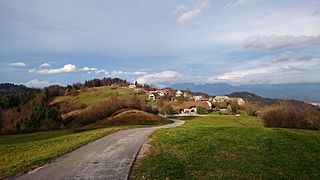
Križna Gora is a small settlement above Visoko in the Municipality of Škofja Loka in the Upper Carniola region of Slovenia.

Podgorci is a village west of Velika Nedelja in the Municipality of Ormož in northeastern Slovenia. The area traditionally belonged to the Styria region and is now included in the Drava Statistical Region.

Bukovje is a settlement in the hills north of Bizeljsko in the Municipality of Brežice in eastern Slovenia. The area was traditionally part of Styria. It is now included with the rest of the municipality in the Lower Sava Statistical Region. It includes the hamlets of Graben to the west, which partially lies in the valley of Sračjak Creek, and Žalce, just above the Sotla River.

Zgonče is a small settlement on the Rute Plateau in the hills south of Rob in the Municipality of Velike Lašče in central Slovenia. The entire municipality is part of the traditional region of Lower Carniola and is now included in the Central Slovenia Statistical Region.
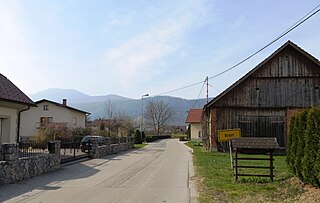
Brest is a village in the Municipality of Ig in central Slovenia, just south of the capital Ljubljana. The entire municipality is part of the traditional region of Inner Carniola and is now included in the Central Slovenia Statistical Region.

Dobravica is a settlement in the Municipality of Ig in central Slovenia. The municipality is part of the traditional region of Inner Carniola and is now included in the Central Slovenia Statistical Region.

Golo is a village in the hills south of Ig in central Slovenia. The entire Municipality of Ig is part of the traditional region of Inner Carniola and is now included in the Central Slovenia Statistical Region.

Iška Vas is a village on the right bank of the Iška River in the Municipality of Ig in central Slovenia, just south of the capital Ljubljana. The entire municipality is part of the traditional region of Inner Carniola and is now included in the Central Slovenia Statistical Region.
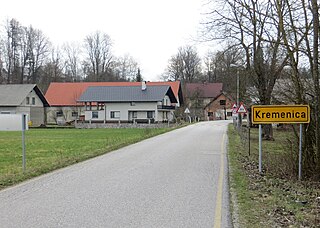
Kremenica is a settlement immediately southeast of Ig in central Slovenia. The entire Municipality of Ig is part of the traditional region of Inner Carniola. It is included in the Central Slovenia Statistical Region.
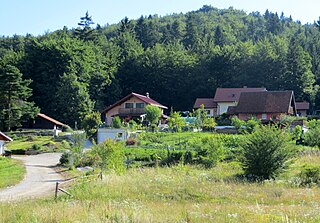
Zapotok is a village in the hills south of Ig in central Slovenia. The entire Municipality of Ig is part of the traditional region of Inner Carniola and is now included in the Central Slovenia Statistical Region.

Slivnica pri Celju is a settlement in the Municipality of Šentjur in eastern Slovenia. The area is part of the historical Styria region. The municipality is now included in the Savinja Statistical Region.
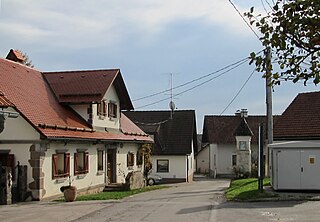
Zgornja Slivnica is a settlement in the Municipality of Grosuplje in central Slovenia. It lies in the hills north of Grosuplje and northeast of Šmarje-Sap and south of Mali Lipoglav in the historical region of Lower Carniola. The municipality is now included in the Central Slovenia Statistical Region.

Zavrtače is a settlement in the hills to the southeast of Višnja Gora in the Municipality of Ivančna Gorica in the historical region of Lower Carniola in central Slovenia. The municipality is included in the Central Slovenia Statistical Region.
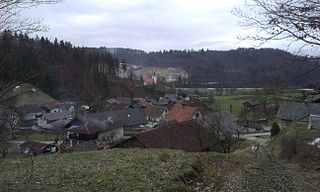
Zgornja Jablanica is a village in the Municipality of Šmartno pri Litiji in central Slovenia. The area is part of the historical region of Lower Carniola. The municipality is now included in the Central Slovenia Statistical Region.




























